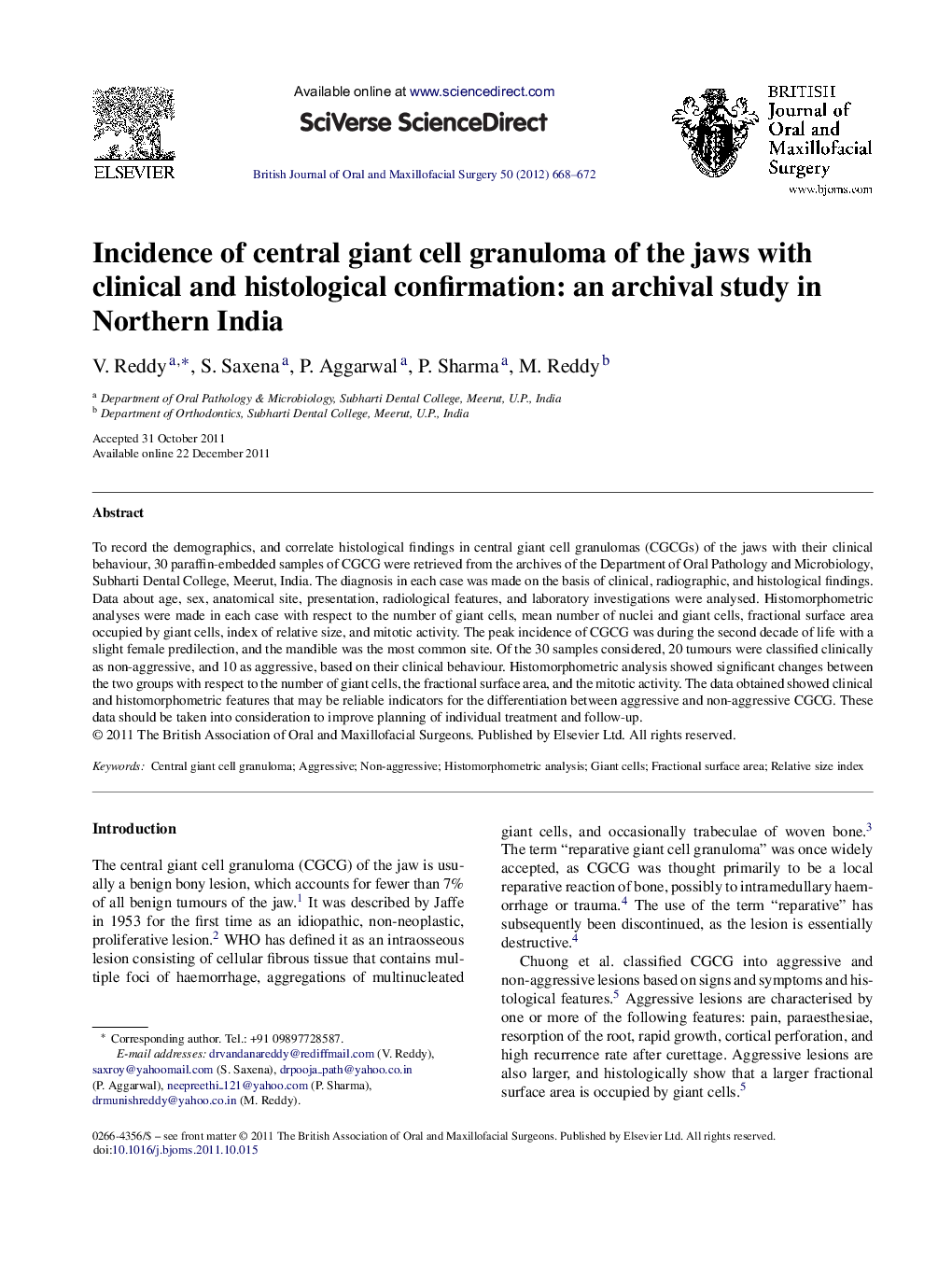| Article ID | Journal | Published Year | Pages | File Type |
|---|---|---|---|---|
| 3123989 | British Journal of Oral and Maxillofacial Surgery | 2012 | 5 Pages |
To record the demographics, and correlate histological findings in central giant cell granulomas (CGCGs) of the jaws with their clinical behaviour, 30 paraffin-embedded samples of CGCG were retrieved from the archives of the Department of Oral Pathology and Microbiology, Subharti Dental College, Meerut, India. The diagnosis in each case was made on the basis of clinical, radiographic, and histological findings. Data about age, sex, anatomical site, presentation, radiological features, and laboratory investigations were analysed. Histomorphometric analyses were made in each case with respect to the number of giant cells, mean number of nuclei and giant cells, fractional surface area occupied by giant cells, index of relative size, and mitotic activity. The peak incidence of CGCG was during the second decade of life with a slight female predilection, and the mandible was the most common site. Of the 30 samples considered, 20 tumours were classified clinically as non-aggressive, and 10 as aggressive, based on their clinical behaviour. Histomorphometric analysis showed significant changes between the two groups with respect to the number of giant cells, the fractional surface area, and the mitotic activity. The data obtained showed clinical and histomorphometric features that may be reliable indicators for the differentiation between aggressive and non-aggressive CGCG. These data should be taken into consideration to improve planning of individual treatment and follow-up.
